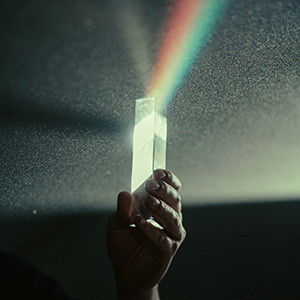The more I learn about cognitive science, the more I realize that our work in purposeful collective action – such as Arts Management – is built on faulty premises. We think, talk, and act in arts organizations as if we’re dominantly rational beings, making sense of the world and the work through conscious and explicit stories, and moving toward an available future like we move toward an observable horizon. None of this is true.

What’s more likely is that we are complex and evolved animals whose entire bodies find patterns and form predictions about possible futures. Further, our actions shape those patterns by proving or improving our predictions, or by making them real. Conscious, explicit, and rational thought is certainly part of that process. But it’s always late to the party. And it almost always over-estimates its authority when it arrives.
Even the present moment, according to some theories of cognition (such as Predictive Processing), is constructed from prediction as much as from sensory experience (although the senses provide error correction). What we experience as sight, sound, smell, taste, or touch is largely constructed through our top-down predictions.
The late, great Sir Ken Robinson defined imagination as “the ability to bring into mind things that aren’t present to our senses.” By that definition, we imagine the present even as we pattern-match the past and predict the future.
Why does this matter to Arts Management? To my mind, it opens an array of productive discussions about how we might approach the work. Among them:
- This understanding of human cognition places imagination at the center of any and every lived experience, rather than at the periphery of lovely-but-unnecessary things. It doesn’t favor the artist’s approach to imagination, but rather integrates imagination into all aspects of human knowledge, inquiry, and action.
- The many silos that seem to separate artists, audiences, management practitioners, scientists, scholars, philosophers, politicians, engineers, and beyond now appear as a necessary array of approaches to meeting (and making sense of) the present moment. Each discipline brings unique goals, methods, and conventions to the imagined present, to achieve different objectives in the predicted future. We need them all.
- Our approaches to planning now become more obviously dependent upon the uncertainty and change in which they are attempted. Planning speaks to how far and how well we can guess forward, whether our past pattern-matching fits our possible and probable futures, and whether we’re attending, perceiving, and acting in ways that make those futures available to us.
- The tools or techniques that overly favor rational and explicit sense-making or decision-making will fail us, or just leave us continually surprised, since they represent only a fraction of how we make sense and act in the world – individually and together.
- Further, we can begin to explore the flows and eddies formed by whole systems of people, all of them imagining the present and guessing the future – artists, audiences, funders, donors, policy makers. This would helps us map the “probability densities” common to each discipline for funding, distribution, markets, and other forces that shape the arts ecologies.
- We can also explore the many ways that groups of humans – organizations, communities, teams, societies – structure their environments to reduce uncertainty and increase productive prediction and action. This would include conventions, shared practices, norms, explicit rules of behavior, and such. In fact, it can be useful to consider an organization, primarily, as a platform to reduce shared uncertainty.
- Finally, a whole-body, predictive, probabilistic relationship between we humans and our present and future hints at why creative expression and experience can resonate so deeply. A poem, a piece of music, a play, a film, a dance, and even more static forms of expression discover and heighten a particular path through prediction and experience – often at multiple levels of our awareness, including sensory, emotional, and cognitive. It might be that our bodies resonate, recognize, and revel in this curated journey.
And while this may all sound like an intellectual field trip, detached from practical application, the deepest truth I draw from emerging cognitive science is that action is the means and the goal of lived experience. We make sense of the world so that we can act in it. And we act in the world so that we can make sense of it, so that we can act in it. That suggests that our attention, perception, and action are all part of the same impulse, and provide the substrate for all the ways we are in the world.

